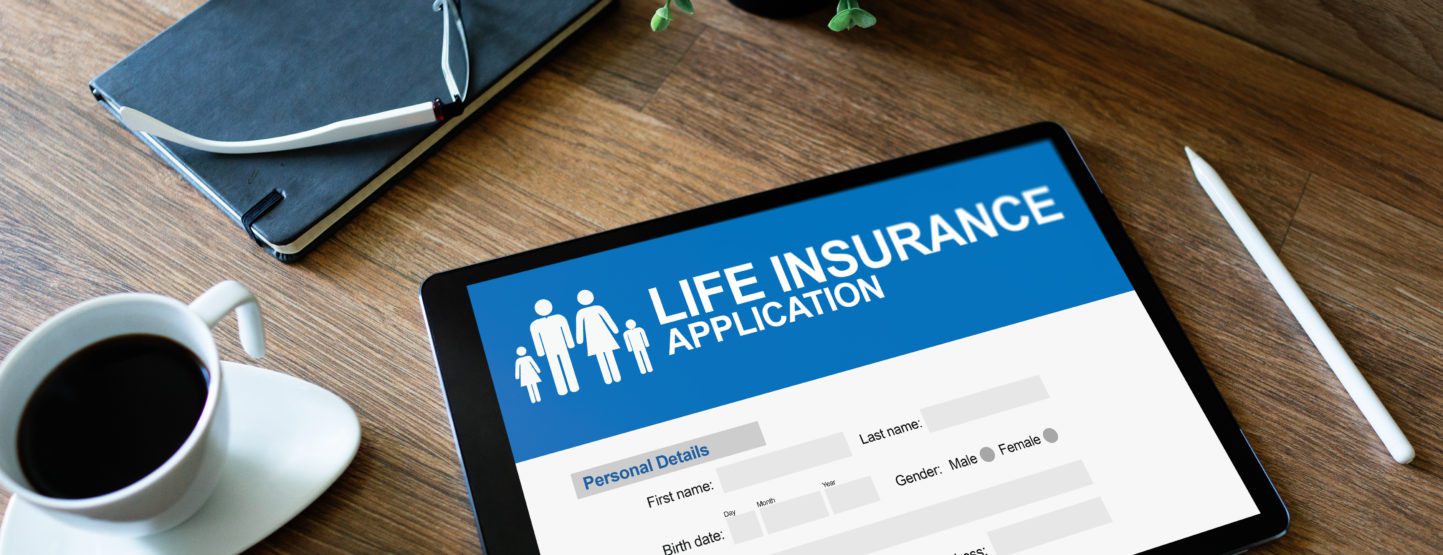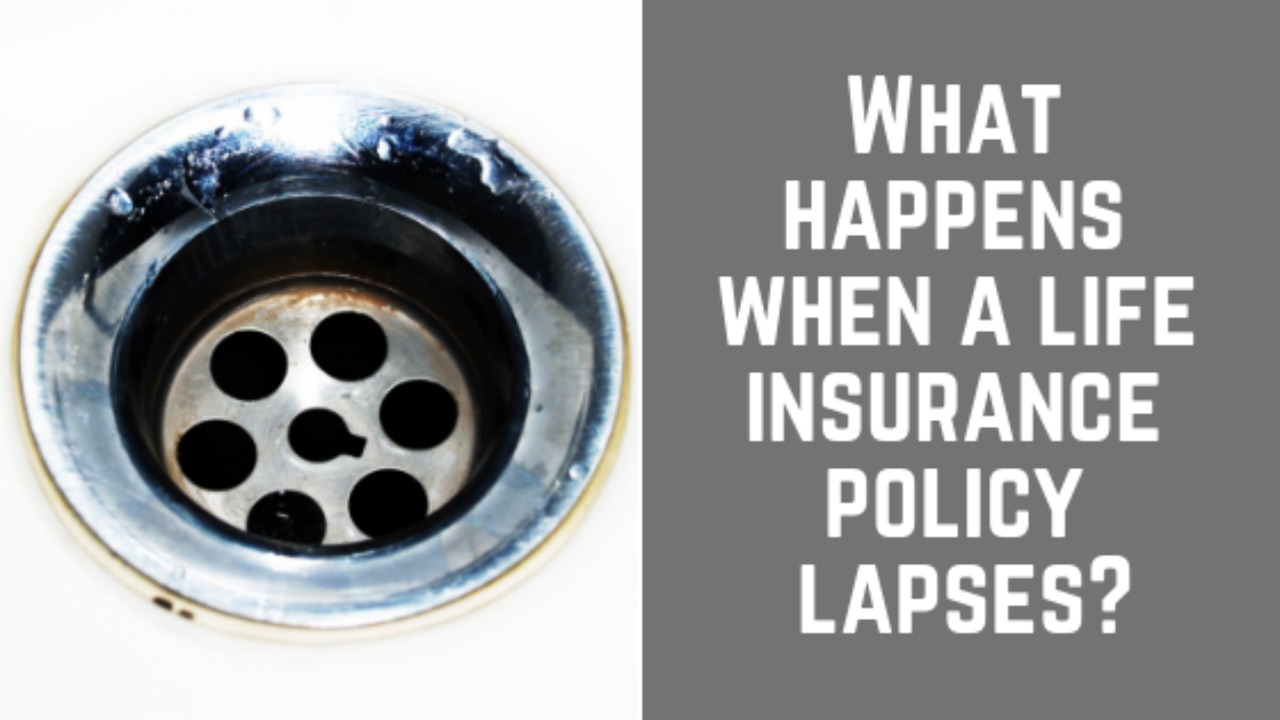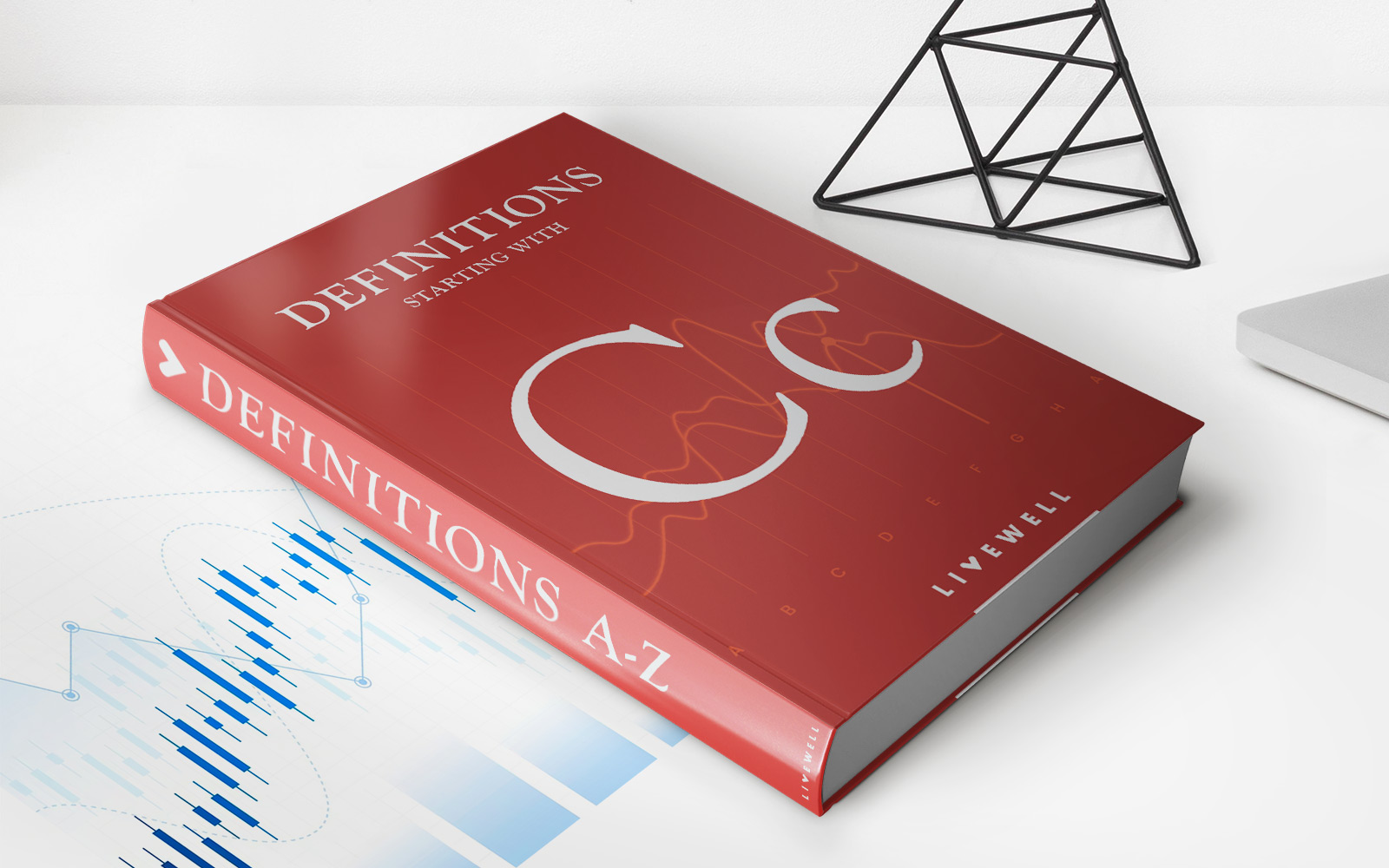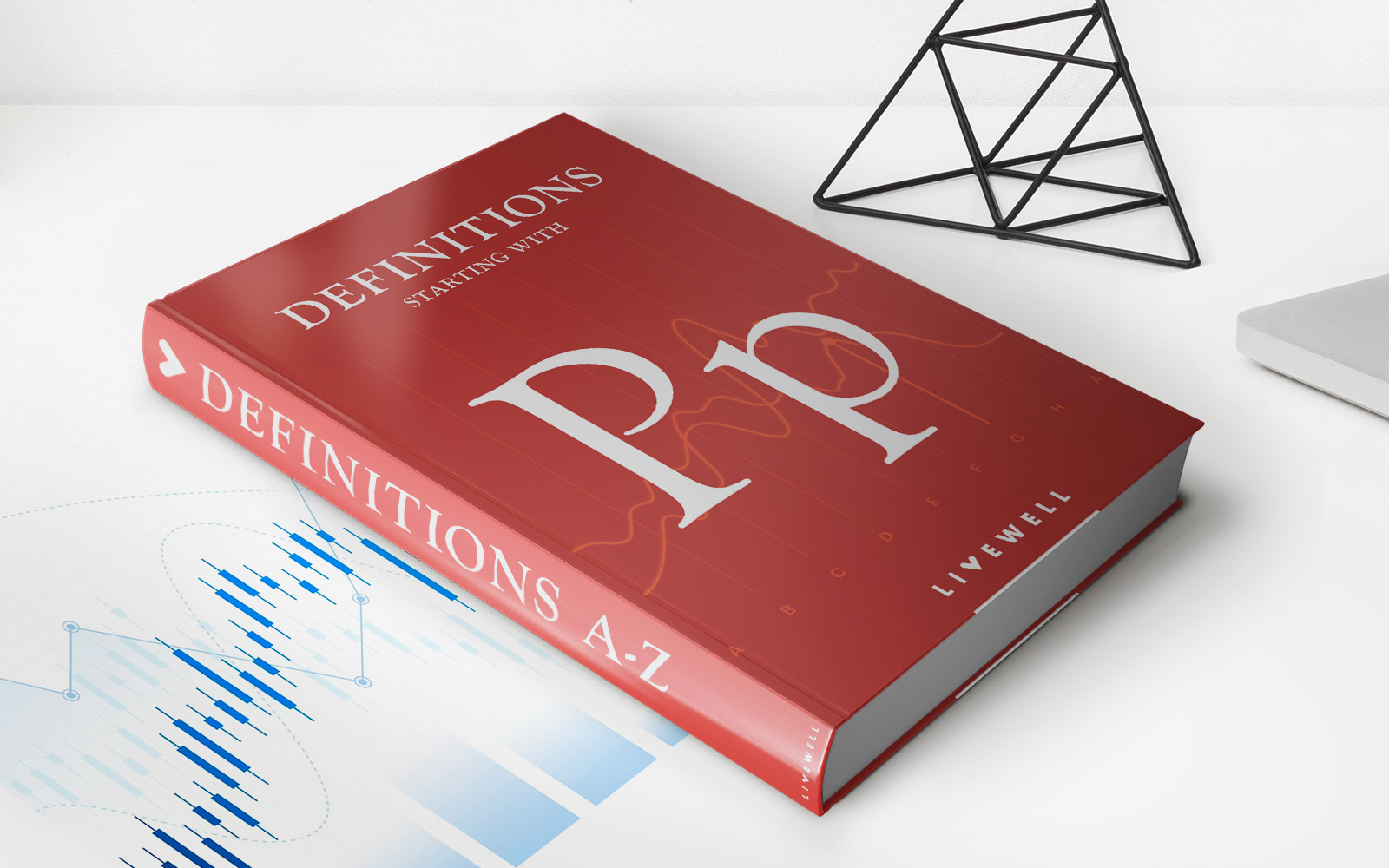Home>Finance>What Would Happen If A Life Insurance Applicant Was Given A Conditional Receipt?


Finance
What Would Happen If A Life Insurance Applicant Was Given A Conditional Receipt?
Published: October 16, 2023
Find out the impact of receiving a conditional receipt when applying for life insurance. Understand the financial implications and potential outcomes.
(Many of the links in this article redirect to a specific reviewed product. Your purchase of these products through affiliate links helps to generate commission for LiveWell, at no extra cost. Learn more)
Table of Contents
- Introduction
- Definition of a Conditional Receipt
- Purpose of a Conditional Receipt
- Conditions for Issuing a Conditional Receipt
- Effect of a Conditional Receipt on the Insurance Application
- Scenario 1: Applicant Passes All Underwriting Requirements
- Scenario 2: Applicant Fails Underwriting Requirements
- Impact on Premium and Coverage Amount
- Duration and Expiration of a Conditional Receipt
- Conclusion
Introduction
Life insurance is a crucial financial tool that provides protection and financial security to individuals and their loved ones in the event of death. When applying for life insurance coverage, there is a standard underwriting process that determines the insurability and premium rates for the applicant. However, in certain cases, an insurance company may provide applicants with a conditional receipt.
A conditional receipt is a temporary insurance coverage document that is issued to applicants during the underwriting process. It serves as an acknowledgment by the insurance company that the application and initial premium have been received. This receipt may come with certain conditions and can have an impact on the insurance application process.
The purpose of this article is to explore what would happen if a life insurance applicant was given a conditional receipt. We will delve into the definition of a conditional receipt, its purpose, the conditions for issuing it, and the effect it can have on an insurance application. Additionally, we will discuss the scenarios that may arise when an applicant either passes or fails the underwriting requirements and how it can impact the premium and coverage amount. Finally, we will address the duration and expiration of a conditional receipt.
By understanding these aspects, both prospective life insurance applicants and policyholders can gain valuable insights into the significance of a conditional receipt and its implications for their insurance coverage.
Definition of a Conditional Receipt
A conditional receipt is a document issued by an insurance company to an applicant during the underwriting process. It serves as a temporary form of insurance coverage until the company makes a final decision on the application. This receipt is conditional because it comes with certain requirements and conditions that must be met to maintain its validity.
When an applicant submits a life insurance application, along with the initial premium payment, the insurance company may issue a conditional receipt. This receipt confirms that the application and payment have been received and acknowledged by the company. It acts as proof of temporary coverage during the underwriting process, providing some level of financial protection to the applicant and their beneficiaries.
The specific terms and conditions of a conditional receipt can vary depending on the insurance company and the type of policy being applied for. Typically, these conditions outline the time period during which the receipt is valid, any restrictions on coverage, and the actions or events that may affect its validity.
It’s important to note that a conditional receipt does not guarantee full coverage or approval of the insurance application. It simply provides temporary protection until the company completes the underwriting process and finalizes the policy’s terms and conditions.
Conditional receipts are commonly issued for life insurance policies, especially in cases where the applicant needs immediate coverage. This can be particularly relevant for individuals who have dependents or specific financial obligations that require immediate protection.
It’s crucial for applicants to carefully review the terms and conditions of the conditional receipt to understand what is required to maintain its validity. Failure to meet the specified conditions can result in the forfeiture of coverage and potentially impact the policy’s final terms and premiums.
Now that we understand the definition of a conditional receipt, let’s explore its purpose in the next section.
Purpose of a Conditional Receipt
The primary purpose of a conditional receipt is to provide temporary insurance coverage to the applicant during the underwriting process. This serves several important purposes for both the insurance company and the applicant.
For the insurance company, issuing a conditional receipt helps demonstrate their commitment to the applicant and ensures that they have some level of protection while the application is being evaluated. It also allows the company to begin the process of assessing the applicant’s insurability and determining the appropriate premium rates for the requested coverage.
From the applicant’s perspective, a conditional receipt provides immediate peace of mind and a certain level of financial protection. This can be especially important for individuals who have dependents or financial obligations that would be impacted in the event of their death. Having temporary coverage in place can help alleviate some of the concerns and uncertainties during the underwriting process.
Moreover, a conditional receipt may also be issued to help expedite the insurance approval process. In certain cases where time is of the essence, the insurance company may issue a conditional receipt to provide immediate coverage while additional information or medical exams are being obtained. This allows the applicant to have coverage in place while the underwriting process is being completed, thereby minimizing any potential gaps in their insurance protection.
In addition to providing temporary coverage, a conditional receipt can also help applicants lock in favorable premium rates. If during the underwriting process the applicant’s health condition deteriorates or becomes riskier, having a conditional receipt with a specific premium rate can protect the applicant from potentially higher rates that would reflect their worsened health condition.
It’s important to note that while a conditional receipt provides temporary coverage, it does not guarantee the approval of the insurance application. The final decision regarding the applicant’s insurability and the policy terms and conditions will be determined based on the insurance company’s evaluation of the applicant’s overall risk profile.
Now that we understand the purpose of a conditional receipt, let’s explore the conditions for issuing it in the next section.
Conditions for Issuing a Conditional Receipt
Insurance companies typically have specific conditions in place for issuing a conditional receipt. These conditions ensure that the applicant meets certain requirements and that the insurance company can assess the applicant’s risk profile accurately. While the exact conditions can vary among insurers, some common requirements include:
- Submission of a complete application: The applicant must provide all necessary information and documentation required to evaluate their insurability. This includes personal details, medical history, and any other relevant information requested by the insurance company.
- Payment of the initial premium: The applicant is usually required to pay the initial premium amount specified in the application. This payment serves as confirmation of the intent to purchase the insurance coverage and initiates the underwriting process.
- Good faith representation: The applicant must provide accurate and truthful information in their application. Misrepresentation or withholding of information may lead to the rejection of the application or the termination of the conditional receipt.
- Insurability requirements: The applicant generally needs to meet certain criteria for insurability, such as being within the age range specified by the insurance company and meeting the company’s health standards. Insurers may also consider other factors like occupation, lifestyle habits, and any potential high-risk activities.
Additionally, the insurance company may have specific conditions related to the duration of the conditional receipt and any restrictions on coverage during this period. For example, coverage may be limited to accidental death only, or a specific waiting period may be imposed for certain types of claims. These conditions will be clearly outlined in the receipt, and it is important for applicants to review and understand them.
It’s worth noting that the issuance of a conditional receipt is at the discretion of the insurance company. They may choose not to issue a conditional receipt if the application does not meet their criteria or if they have concerns about the applicant’s insurability.
Now that we understand the conditions for issuing a conditional receipt, let’s explore the effect it can have on an insurance application in the next section.
Effect of a Conditional Receipt on the Insurance Application
A conditional receipt has several effects on the insurance application process. It provides temporary coverage, allows the underwriting process to begin, and can impact the final terms and conditions of the policy. Let’s examine these effects in more detail.
Temporary Coverage: Upon the issuance of a conditional receipt, the applicant gains temporary insurance coverage. This coverage is typically limited in scope and duration and is contingent upon meeting the conditions specified in the receipt. It offers a level of reassurance to the applicant and their beneficiaries during the underwriting process.
Initiation of Underwriting: The conditional receipt signifies the initiation of the underwriting process. The insurance company starts evaluating the applicant’s risk profile, such as reviewing their medical history, conducting necessary medical exams, and assessing other relevant information. The underwriting process plays a crucial role in determining the applicant’s insurability and the final terms and conditions of the policy.
Potential Impact on Final Terms: The existence of a conditional receipt can impact the final terms and conditions of the insurance policy. If the applicant’s health or risk profile changes during the underwriting process, the insurance company may reconsider the premium rate or coverage amount. This can be advantageous if the applicant’s health deteriorates, as they may still be eligible for coverage at the initially quoted premium rate.
However, it’s important to note that the issuance of a conditional receipt does not guarantee approval of the insurance application or the final terms and conditions of the policy. The insurance company’s assessment during the underwriting process will ultimately determine the applicant’s insurability and the specific details of the policy.
If the applicant is deemed not eligible for coverage based on the underwriting evaluation, the conditional receipt will expire, and any premiums paid will be refunded. On the other hand, if the applicant is approved for coverage, the conditional receipt will be converted into a full policy, and the premium payment will be applied towards the policy.
Next, let’s look at two scenarios: one where the applicant passes all underwriting requirements and another where the applicant fails.
Scenario 1: Applicant Passes All Underwriting Requirements
In this scenario, the applicant who was issued a conditional receipt successfully passes all the underwriting requirements set by the insurance company. The following events take place:
- Approval for Coverage: After a thorough evaluation of the applicant’s risk profile, the insurance company determines that they are eligible for coverage. The applicant’s health condition, lifestyle, and other factors are all found to be within the acceptable range for the requested policy.
- Conversion of Conditional Receipt: The conditional receipt is converted into a full policy, and the terms and conditions specified in the initial application are finalized. The premium payment made with the application is applied towards the policy.
- Premium Adjustment: If any changes were made during the underwriting process, such as adjustments in the coverage amount or premium rates, they are reflected in the final policy. The premium rates may be higher or lower depending on the underwriting assessment but are typically in line with the original quote as long as there were no material changes in the applicant’s health or risk profile.
- Effect on Coverage: The coverage provided under the converted policy is no longer limited to the temporary coverage provided by the conditional receipt. Instead, it reflects the full coverage outlined in the policy’s terms and conditions.
It’s important to note that passing all underwriting requirements and converting the conditional receipt into a full policy does not guarantee that the policyholder will be covered for any pre-existing medical conditions. Insurance policies often have exclusions for pre-existing conditions, which means that any claims related to those conditions may not be covered or may be subject to certain waiting periods.
In this scenario, the issuance of the conditional receipt served as a temporary form of coverage while the underwriting process was completed. The applicant’s successful passage through the underwriting requirements validates their insurability, and they can now enjoy long-term protection under the converted policy.
Now, let’s consider a different scenario where the applicant fails to meet the underwriting requirements.
Scenario 2: Applicant Fails Underwriting Requirements
In this scenario, the applicant who was issued a conditional receipt fails to meet the underwriting requirements set by the insurance company. This can occur due to various factors, such as adverse medical findings or high-risk lifestyle choices. The following events take place:
- Notification of Ineligibility: After a thorough evaluation of the applicant’s risk profile, the insurance company determines that they do not meet the requirements for coverage. This could be due to factors such as a significant pre-existing medical condition, a high-risk occupation, or a history of risky activities that make insuring the individual too costly or risky for the company.
- Expiration of Conditional Receipt: The conditional receipt expires, and the temporary coverage it provided ceases to be in effect. The applicant is no longer protected by the insurance company.
- Premium Refund: Any premiums paid with the application are usually refunded to the applicant, minus any administrative fees that may apply.
- Consideration of Alternatives: In some cases, individuals who fail the underwriting process may still have options for securing life insurance coverage. They can explore alternatives such as guaranteed issue policies or policies that do not require medical underwriting, although these policies often come with certain limitations or higher premiums.
In this scenario, the conditional receipt served as a temporary form of coverage during the evaluation process. However, the applicant’s failure to meet the underwriting requirements ultimately results in the policy not being issued.
It’s important to note that being declined coverage or failing the underwriting process for one insurance company does not necessarily mean that the applicant will face the same outcome with every insurer. Different insurance companies have varying underwriting guidelines and risk tolerance levels. If an applicant is declined coverage, they may still have options to explore with other insurers.
Understanding the potential outcomes in scenarios where an applicant either passes or fails the underwriting process is crucial. By being aware of these possibilities, individuals can make informed decisions and explore alternative options if needed.
Next, let’s explore the impact of a conditional receipt on the premium and coverage amount.
Impact on Premium and Coverage Amount
The issuance of a conditional receipt can have an impact on the premium and coverage amount of a life insurance policy. Let’s explore how this plays out:
Premium Stability: In most cases, the premium quoted at the time of application remains stable if the applicant passes the underwriting process. This means that the premium rate initially provided in the conditional receipt will likely be maintained for the converted policy. However, it’s important to note that any changes in the applicant’s health or risk profile during the underwriting process can potentially lead to adjustments in the final premium.
Coverage Amount: If the applicant’s coverage amount remains unchanged during the underwriting process, the coverage specified in the conditional receipt will be confirmed and reflected in the final policy. However, if any modifications are made to the coverage amount based on the underwriting assessment, the converted policy may reflect those changes. Factors such as the applicant’s age, health condition, and financial circumstances can influence the insurer’s decision regarding the coverage amount.
Impact of Underwriting Decisions: The underwriting process helps insurance companies assess the risk factors associated with an applicant, including their health, lifestyle, and occupation. The results of the underwriting evaluation can have an impact on both the premium and coverage amount. If the underwriting assessment reveals a higher risk profile, such as a medical condition or risky lifestyle, the insurance company may increase the premium or reduce the coverage amount. On the other hand, applicants with better-than-expected risk profiles may benefit from lower premiums or potentially higher coverage amounts.
Pre-existing Medical Conditions: In some cases, an applicant may have pre-existing medical conditions that can impact the premium and coverage amount. If an applicant has a significant pre-existing condition, the insurance company may offer coverage with exclusions or limitations related to that specific condition. Alternatively, they may offer coverage at an increased premium rate that reflects the additional risk associated with the medical condition.
It’s essential for applicants to understand that the premium and coverage amount quoted in the conditional receipt are subject to the final underwriting decision. Any changes in the applicant’s health, occupation, or lifestyle can result in adjustments to the premium and coverage amount during the underwriting process.
By being transparent and providing accurate information during the application process, applicants can help ensure a smooth underwriting process and potentially maintain the initially quoted premium and coverage amount.
Next, let’s explore the duration and expiration of a conditional receipt.
Duration and Expiration of a Conditional Receipt
A conditional receipt has a defined duration and expiration date, which are typically specified in the receipt itself. Let’s examine the duration and expiration of a conditional receipt:
Duration: The duration of a conditional receipt can vary depending on the insurance company and the specific terms outlined in the receipt. It is usually a temporary period during which the applicant receives coverage while their application is being evaluated. The duration can range from a few days to several months, depending on the complexity of the underwriting process and the type of policy applied for.
Expiration: The conditional receipt has an expiration date, which marks the end of its validity. Once the receipt expires, the temporary coverage provided by the receipt ceases to be in effect and the applicant is no longer protected by the insurance company. It’s crucial for applicants to be aware of the expiration date and ensure that their application is processed and evaluated before that date.
It’s important to note that expiration dates are typically set to ensure that the insurance company has sufficient time to complete the underwriting process and make a decision on the applicant’s eligibility for coverage. If the evaluation process takes longer than the duration specified in the receipt, the applicant may need to contact the insurance company to request an extension or determine the next steps.
In some cases, the conditional receipt may also have specific conditions that can cause it to expire before the stated expiration date. For example, if the applicant’s health condition changes significantly during the conditional receipt period, the insurance company may choose to cancel the receipt and reassess the applicant’s insurability. It’s important for applicants to carefully review the terms and conditions of the receipt to understand any such conditions that could potentially lead to expiration.
Expired conditional receipts have no value, and any premiums paid with the application are typically refunded to the applicant. If the applicant still wishes to pursue life insurance coverage after the expiration of a conditional receipt, they may need to reapply, providing updated information and potentially undergoing a new underwriting process.
Understanding the duration and expiration of a conditional receipt is crucial for applicants to ensure that they have adequate coverage during the underwriting process and to avoid any gaps in their insurance protection.
Now, let’s conclude our discussion on the impact of a conditional receipt and its significance in the life insurance application process.
Conclusion
A conditional receipt plays a vital role in the life insurance application process. It provides temporary coverage to applicants while their application is being evaluated by the insurance company. Understanding the implications and significance of a conditional receipt is crucial for both applicants and policyholders.
A conditional receipt serves as proof of temporary coverage and provides immediate protection to applicants during the underwriting process. It allows the insurance company to begin evaluating the applicant’s risk profile and determining the appropriate premium and coverage amount. For applicants, it offers peace of mind and financial security during the evaluation period.
However, it’s important to note that the issuance of a conditional receipt does not guarantee approval of the insurance application or the final terms and conditions of the policy. The applicant’s insurability and the specific details of the policy are determined through the underwriting process.
If an applicant passes all underwriting requirements, the conditional receipt is converted into a full policy, and the premium and coverage amounts remain stable unless there are significant changes in the applicant’s risk profile. On the other hand, if an applicant fails to meet the underwriting requirements, the conditional receipt expires, and coverage is terminated.
The premium and coverage amount quoted in the conditional receipt are subject to potential adjustments based on the underwriting evaluation. The applicant’s health, lifestyle, and occupation can influence the final premium rates and coverage amount. It’s essential for applicants to provide accurate and truthful information during the application process to maintain the initially quoted terms and conditions as much as possible.
Finally, the duration and expiration of a conditional receipt are defined in the receipt itself. Applicants need to be aware of the expiration date to ensure that their application is processed within the specified timeframe.
In summary, a conditional receipt provides temporary coverage and serves as a crucial component of the life insurance application process. It offers immediate protection and allows both applicants and insurance companies to start evaluating the applicant’s risk profile. By understanding the implications and conditions associated with a conditional receipt, applicants can make informed decisions and navigate the insurance application process more effectively.














